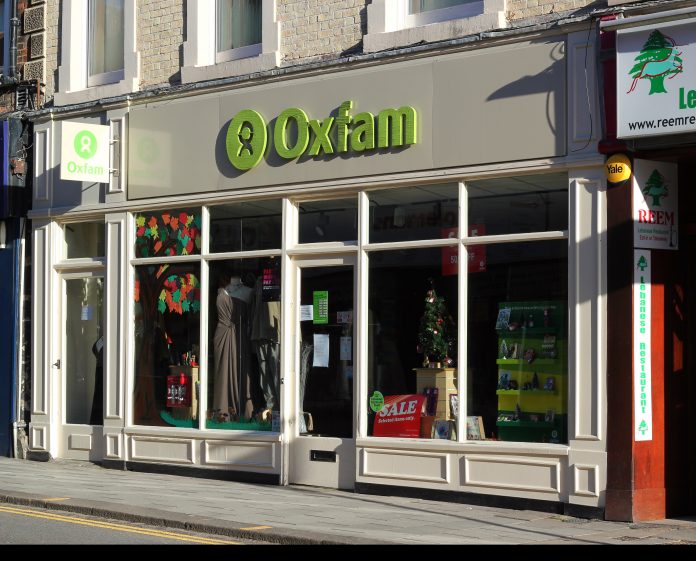John McLaren, Head of Business, Idox, explores how the charity sector’s funding shortfall can be alleviated with technology
COVID-19 has had a calamitous effect on the state of the UK’s charity sector. With limited access to vital funding, many charities have been unable to fulfil their primary role of sewing together critical gaps in society. The situation has highlighted the need for solutions that can ensure charities are aware of – and have access to – increasingly vital funding opportunities.
Increased strain
There are currently approximately 166,000 registered charities in the UK. Supporting a vast array of causes, they range hugely in size, and together have a collective turnover of just under £48 billion. In addition, there are also around 20,000 organisations that have charitable status, such as churches and public schools.
Over the last 18 months, the impact of the pandemic has put these charities under considerable strain. Demand for their services increased but, with charity shops forced to close their doors, and fundraising events cancelled, the opportunities to raise funds decreased significantly. Even with the easing of lockdown, many charities remain concerned about the rebound time before fundraising events can take place on large scale once more. So intense was the pressure, one in ten charities actually faced bankruptcy, while many more had to eat into vital cash reserves just to survive.
All of this has a knock-on effect on wider society. Able to touch many aspects of life that can be overlooked or underfunded, charitable organisations have become a critical component of our national infrastructure. Their disappearance can have an impact on the very threads that hold our country together.
Connecting the dots
Donations aren’t the only source of charitable funding, of course. Grants are available from a number of different organisations, or funders, ranging from Governments and the National Lottery to various less-well-known entities looking to provide funding for qualifying causes.
The challenge, however, is that many of these funds go unallocated. A 2020 survey of 164 funders found that 30% hadn’t allocated their full budget, with many citing that they didn’t receive enough applications which met the criteria. So, while many charities face funding shortfalls, there are, in fact, potential opportunities available, about which they may be unaware, or may lack the resources they need to apply for them.
What’s needed is a technological solution capable of connecting the dots. In the same way a recruiter links jobseekers with companies they may not have been aware of, or that they didn’t know were hiring, a real-time portal is required that enables organisations to see what’s available to them, connecting them with potential funders.
Notifications and guidance
From local Scout groups to social enterprises, charities of any size can access real-time portals to see relevant funding opportunities in their local area. Notified when new opportunities arise, they can be kept abreast of any developments and advised on when and how to apply.
In order to alleviate the stress that applying for funding can cause – not to mention reducing the risk of missing out – notifications are written in plain English and include all the necessary key information, such as criteria, deadlines, and regulations. They are supported by helpful news alerts, showing whether an earlier fund has reopened, for example, or if there has been a change in strategy that would affect funding provision. What’s more, how-to guides and blog posts should offer advice on applying for funds, such as common pitfalls and application mistakes to avoid.
By way of illustration, Hull City Council’s Regeneration Department focuses on supporting businesses and local Voluntary and Community Sector Enterprise (VCSE) organisations in the city. The pandemic meant many of these organisations were struggling. With the reduction in available funding for local authorities, the Council needed to provide support and knowledge to the local community throughout this critical period.
It carried out twice-weekly COVID-19 funding-specific searches and shared this information widely. Its portal gave VCSE organisations access to good quality, potential funding opportunities that could help them continue to grow and deliver valuable support to the city’s residents. At the time of writing, there have been 186 reports of funding successes, 81% of which were for £10,000 and under, demonstrating a high level of assistance for the smaller, community-based organisations for which the portal was intended to support.
Flexibility and collaboration
Not only are technological solutions such as the portals described here helping to give charities greater access to funding, but the funding community itself is also working to address the impact that COVID has had on the charity sector.
There have been campaigns led by The Institute for Voluntary Action Research (IVAR) to make the funding process more flexible and accessible and many funders have streamlined the bidding process to make it easier for charities to secure grants. Some are even proactively bringing together multiple organisations with similar objectives, to address the needs of individual applicants who don’t quite meet the grant criteria. In fact, in response to the pandemic, nearly half of funders are now looking to contribute to further collaborations.
Ultimately, in a country still fighting the effects of the pandemic, charities are more important than ever for sewing together the gaps in society. With thousands of funding opportunities available at any given time, technology has the ability to connect charities with funders – known or unknown – who can enable them to better provide for the causes and communities they serve.











